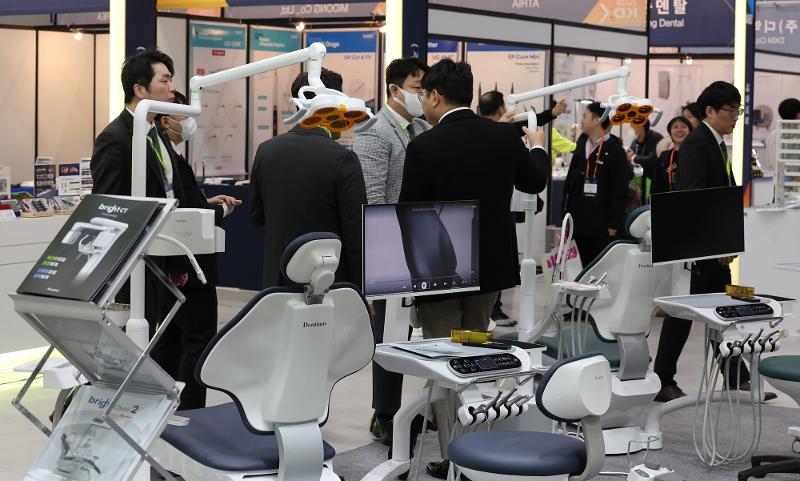
The Ministry of Food and Drug Safety on May 28 said domestic medical devices last year finished KRW 587.8 billion in the black for their fourth straight year of surplus. Shown are visitors on Dec. 17, 2023, looking around at the Korea International Dental Devices Exhibition hosted by the aT Center in Seoul's Gangnam-gu District. (Yonhap News)
By Lee Dasom
The domestic medical devices sector last year finished KRW 587.8 billion in the black for their fourth consecutive year of surplus.
The Ministry of Food and Drug Safety on May 28 said in a 2023 report on the production, import and export of such equipment that the scale of the industry last year hit KRW 10.72 trillion. The sector's average annual growth of 8.3% over the past five years attested to its continuous upward trend.
Domestic output of such devices last year fell 28.1% from 2022 to KRW 11.31 trillion due to lower demand for coronavirus testing kits stemming from recovery from the COVID-19 pandemic. The production value of in-vitro diagnostic devices last year plummeted 80.4% to KRW 1.18 trillion and their exports nosedived 75.7% to KRW 1.12 trillion year on year.
Production of general medical equipment last year, however, rose 4.5% from KRW 9.69 trillion in 2022 to KRW 10.13 trillion last year.
The scale of the domestic market for digital medical devices reached KRW 409.9 billion, as the share of such items out of all exports of medical devices grew for the fourth straight year.
Specifically, exports of digital medical devices comprising software only saw astounding average annual growth of 311.7% over the four-year period.
"The scale of domestic production last year was about five times higher than import volume," the ministry said. "The growth potential for domestic digital medical devices based on software is huge."
Dental implant fixtures in 2020 lost the top spot in domestic production due to surging domestic output of in-vitro diagnostic medical devices following the outbreak of the COVID-19 pandemic. But they regained the No. 1 ranking over the past four years with average annual growth rates of 24.4% in production and 29.9% in exports.
"To promote the national task of becoming a global bio digital health power, the National Assembly in January enacted the Digital Medical Products Act," the ministry said. "We will further raise our global competitiveness in digital medical devices."
By country, the U.S. last year was the world's leading exporters of such equipment with USD 890 million, followed by China with USD 650 million, Japan USD 360 million and Russia USD 340 million.
dlektha0319@korea.kr
